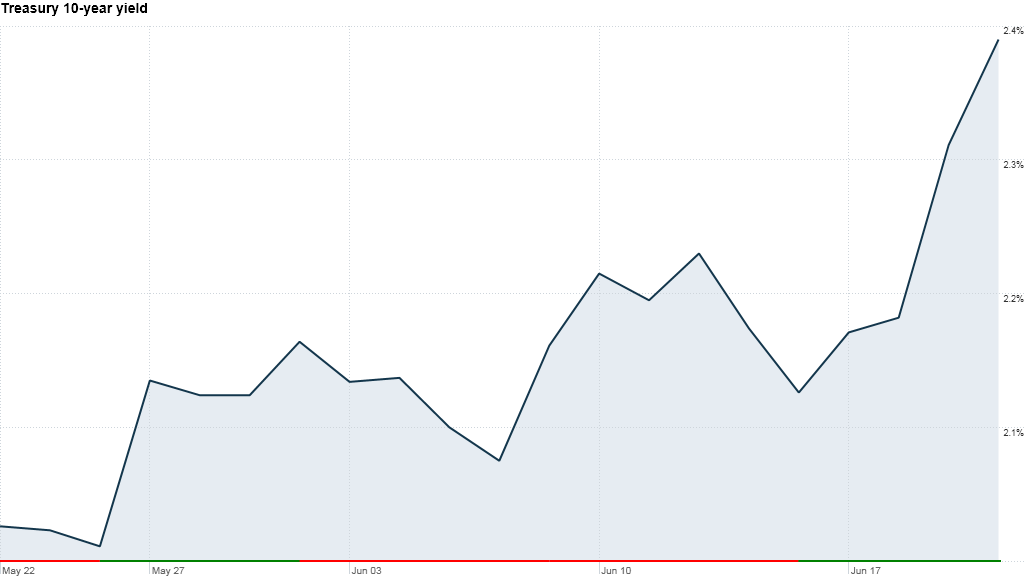Investors continued to rush out of bonds Thursday, a day after Federal Reserve chairman Ben Bernanke said the central bank is preparing to scale back its bond buying program if the economic recovery remains on track.
The heavy sell-off pushed the 10-year Treasury yield as high as 2.46%, a level it hadn't previously touched since August 2011. Yields on several other government bonds also spiked to their highest levels in nearly two years.
Investors have been bailing out of bonds and sending yields higher during the past month amid speculation that the Fed will soon begin to taper its monthly bond purchases, known as quantitative easing. The Fed currently buys $85 billion a month in mortgage-backed securities and Treasuries.
On Wednesday, Bernanke did his best to give a timeline of how the tapering could work. The Fed chief said if the economy continues to improve in line with the Fed's outlook, it would be "appropriate to moderate the monthly pace of purchases later this year," and end the program by the time the unemployment rate comes down to 7%, which the Fed expects will be around mid-2014.
Related: Ben Bernanke's power over your money
Bernanke also made it clear that a hike in the Fed's key short-term interest rate, which stands near zero, is "still far in the future."
But that didn't stop nervous bond investors from selling more Thursday.
"Most investors have been expecting the Fed to begin tapering back bond purchases for quite some time, so that's not a surprise," said Rob Fross, co-founder and adviser at Fross & Fross Wealth Management. "But since we've had rates held artificially low for an extended period of time, there's going to be a springboard bounce in rates."
Fross doesn't think interest rates will continue to rise as rapidly as they have been. He thinks the 10-year Treasury yield should steady around 2.5% by the end of the year.
Related: Investors shouldn't worry about the Fed
The big spike in bond rates may be an unwelcome shock for investors, particularly retirees, who had been rushing into Treasuries because they though these were relatively safe assets to own.
Although Fross has been preparing his clients for a rise in interest rates during the past several months, he has been getting calls from clients who noticed the recent losses in their bond investments.
"When they open their statements and see a loss in what they think is the conservative side of their portfolio, that causes concerns," said Fross.
The past month has been particularly rough, with big moves down in bond prices and stocks. Fross said he tries to help his clients understand that the Fed's upcoming policy changes are causing short-term volatility, but he also asks them to consider whether they are traders or investors.
"I tell them that over the long term, the movement of the Fed will have little impact on their portfolio," said Fross. "If you're preparing for 20 years down the line, you don't need to worry about what the Fed is going to do tomorrow."
Still, Fross advises investors who can tolerate a bit more risk to shift their portfolio more towards stocks than bonds.
And to minimize the losses in their bond investments, Fross keeps the duration of bonds typically below two years and uses inverse ETFs, such as the ProShares Short 20+ Year Treasury ETF (TBF), as a hedge. The ETF, which is designed to do well when bond rates are surging, is up 5% in the past month.



